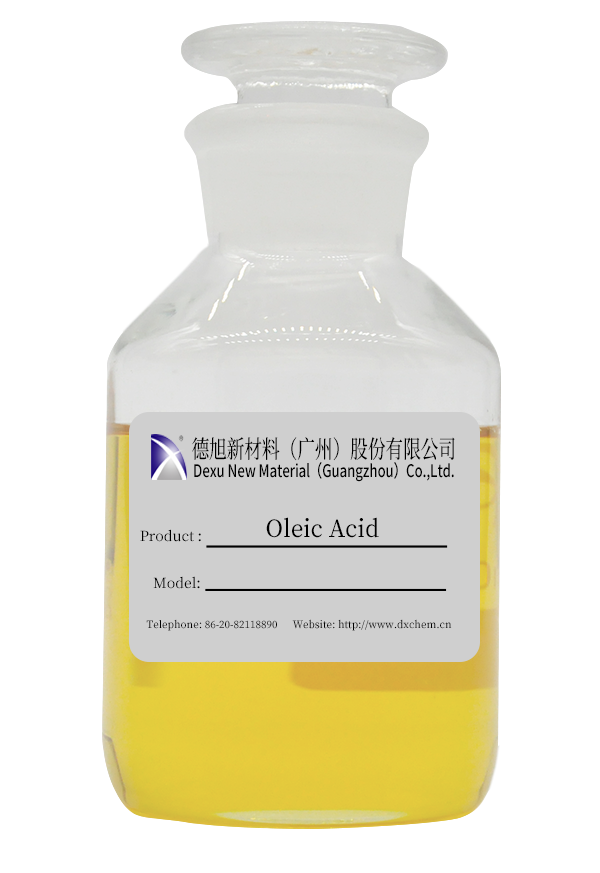
Oleic acid is a mixture composed of oleic acid, linoleic acid, linolenic acid and small amounts of stearic acid and palmitic acid, featuring unsaturated double bonds. It appears as a light yellow transparent oily liquid at room temperature, insoluble in water but soluble in organic solvents like ethanol and gasoline. Upon hydrogenation, it converts to stearic acid and exhibits general chemical properties of organic carboxylic acids along with the chemical reactivity associated with unsaturated double bonds.
Product name | Oleic Acid |
Appearance (25℃) | Light yellow transparent liquid |
Density (20℃, g/cm3) | 0.89 |
Iodine Value (gl₂/100g) | 110-130
|
Acid Value (mgKOH/g) | 190-210 |
Saponification Value (mgKOH/g) | 190-205
|
Shelf life | 1 year |
1. Insoluble in water, easily soluble in organic solvents such as ethanol, ether and chloroform;
2. Easily saponified under alkaline conditions, forming white soft solids after solidification;
3. Extremely prone to oxidation, polymerization or decomposition at high temperatures, non-toxic;
4. May undergo autoxidation when exposed to air for a long time;
5. The soaps of oleic acid can be used as cleaning agents.
1. Oleic acid is used in the textile, dyeing, and daily chemical industries as a raw material for Jetlon T;
2. Oleic acid is used to produce polyurethane and polyamide resins for ink, resin and coating industries;
3. Oleic acid can be made into oleic acid amides, which are used as plasticizers and demolding agents in the plastics industry;
4. Esters of oleic acid are non-ionic surfactants with wide applications;
5. Oleic acid is used as a rolling oil in metal processing industries;
6. Oleic acid is used as a mineral flotation additive in mining industries;
7. Oleic acid is used as a softener and leather fatting agent in the textile industry.
1. 200L plastic bucket, 180Kg/bucket;
2. Stored and transported according to general chemicals .Stored in a dry and ventilated place.